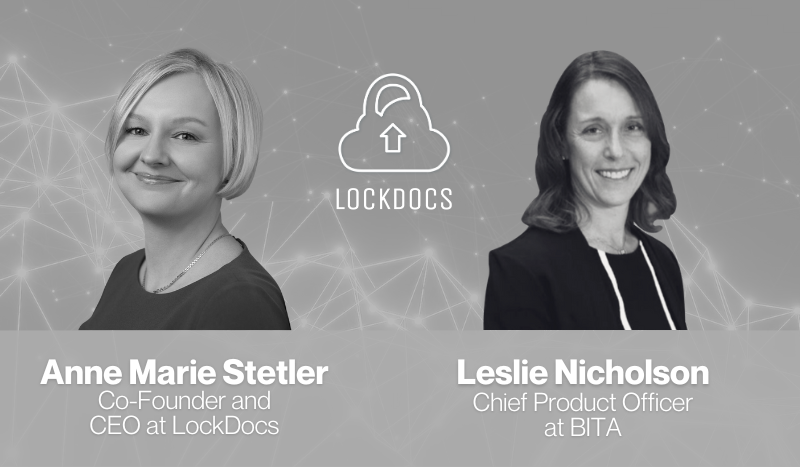Is Your Client Data Vulnerable?
The word ‘confidential’ is second nature to conducting business within the financial services industry. You see it so often when conducting business with SME clients that it’s practically a wink and nod to keep doing what you’ve always done - respecting client’s private information. Financial services particularly deals with some of the most sensitive client data available, and your responsibility is to protect it and keep it secure.
Of course that means that you have security monitoring in place within the business. As technology has improved, so too have your security measures. When documents began to move into a paperless format, you signed up for software solutions that would help keep your systems organized. You installed the latest antivirus program, and kept that up-to-date. Today you work largely through email and software suites, and are reasonably confident in the security of your client data.
Unfortunately, it’s what you may not know that can hurt your business, and seriously harm your clients. There are most likely vulnerable gaps in your security measures, and they’re likely not where you think they are. A deeper knowledge of your weak spots, and how to secure them, can be the best gift you give to your clients.
Most breaches don’t make it into the headlines
We tend to think of data breaches as happening on a large scale. In 2017, the credit management company Equifax failed to respond to a security flaw, potentially exposing vulnerable data of more than 40% of Americans including dates of birth, social security numbers and credit card numbers. Major financial players including Capital One bank, JP Morgan in the United States, and Desjardin Group have fallen victim to similar large-scale breaches.
As technology improves, the capabilities of a data breach and the array of information that it can expose only broadens. In a recent example from 2023, a 2019 version of the US Government’s No Fly List and Terrorist Screening Database were released after a server in Ohio was breached. While the list was a dated one, the attack took minimal effort to orchestrate, and highlighted the vulnerabilities in even the most sensitive data storage.
Yet not every breach will make the news - most actually don’t. A large number of attacks occur on a relatively small scale, going after one vulnerable weak point and searching across the internet to identify any and all instances of one single issue. If you are unlucky enough to still have it in your organization, you may be exposed. These kinds of attacks can bring a small or medium size enterprise to its knees through any number of modern direct attacks such as ransomware, or through the indirect costs of outages, cleanup costs and reputational damage.
Your software suite is not the likely culprit
Many misguided business owners may assume that their vulnerability comes through their software stack itself. Many businesses use Cloud service suites for most of their day-to-day tasks, such as Office 365 (email, word processing, spreadsheets, etc.). There are, of course, vulnerabilities inherent within that sort of system, however vulnerabilities inherent in cloud services are not the biggest risk to the data contained within your business.
System configurations, and the way in which they are used,actually present a much greater risk. While there are attacks that can happen within a software subscription stack, it’s the changes that you make that might make your data increasingly vulnerable. Most financial services professionals customize and configure software to meet their business needs, including adding third-party integrations, or simply changing configurations to best suit your existing setup all make your data more accessible.
The third-party applications, similar to the ones we frequently download on our phones, are a particular point of concern. Such applications can potentially have a business model that is designed upon the consumption of data. Applications may appear to be well-intentioned and helpful, but poor development practices have frequently led to vulnerabilities which grant access to your data through attack vectors.
Another serious risk is simple user error. A workplace can implement robust security directives, such as requiring the use of multifactor authentication (“MFA”) and strong password requirements. However it is nearly impossible to measure every employee’s compliance at every moment, and one inadvertent slip can start a disastrous chain reaction towards a major data breach.
Think about who else has access to your data (hint: it’s more people than you’d think)
While you may not let anyone else directly use your computer, it’s difficult to keep track of all of the individuals that have access to your data. On a cloud-based platform, it can be challenging to measure employees working out of the office, including whether they are always using a secured network, working in a private space, and taking additional measures to ensure that no one unwanted gains access - yet it still happens.
While you try to do your due diligence, there are already several individuals or organizations at play within one simple movement of a piece of ID. When you email sensitive information to someone, such as a scanned copy of your drivers’ license or passport, ask yourself a few questions:
- Who has access to the recipient’s mailbox?- Do they have an assistant?
- What about the recipient organization’s mail server admins?
- Where are those servers backed up, and who has access to that backup data?
As a recipient, if the sender asks you to delete that email, then what process do you have in place to delete it from all locations? If the data on the mail server is backed up, how do you delete one email out of backups while still maintaining the integrity of your server backup? You cannot control the movements of any outside party, and you may not have the knowledge or experience to ensure that the email is wiped from both your email client along with any integrated systems..
There is a better way to secure your documents
If you are working with a nation-wide or multinational firm, they may have an in-house security team in place to specifically address and manage these sorts of issues. Yet that measure of oversight is both impractical and out-of-budget for many in the financial services sector who deal with the same sensitive data on a smaller scale, but may not have the tools in place to ensure that next level of data security.
Thankfully, there’s LockDocs. LockDocs provides a platform to encrypt and store the most confidential and sensitive documents without having to worry about multiple access points, dozens of complicated passwords, or trying to determine who has access to sensitive information. If someone wants you to delete their info, LockDocs allows you to remove it from one central location vs. going on a fishing expedition.
It is nearly impossible to completely eliminate cybersecurity threats, and cost prohibitive to have a team monitoring your access points and vulnerabilities round-the-clock. LockDocs offers a frictionless way for financial services professionals to manage their client’s data easily, and in a way where the clients know that their privacy and security are the top priority.
-1.png?width=255&height=50&name=Logo%20small%20(2)-1.png)


-3.png)
